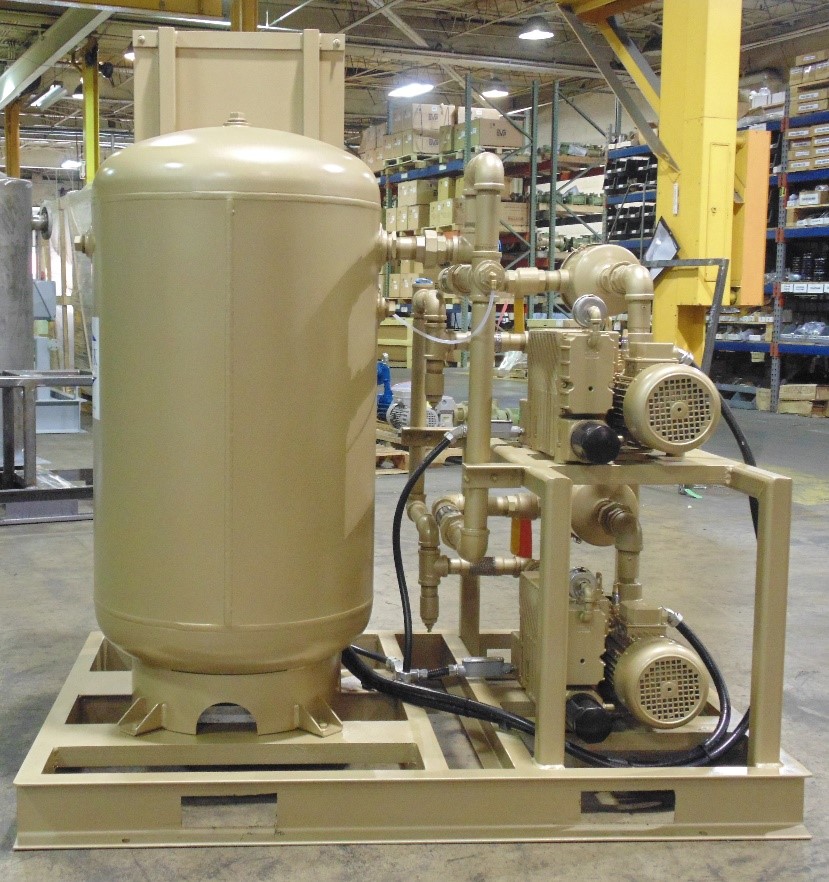Vacuum evacuation of vessels is one of the most widespread applications in the world of vacuum technology. Generally, evacuation is removing gas and vapors from a physical space. Usually the application requires removing ambient air from a closed vessel. This is useful for vacuum testing vessels and central vacuum applications.
Vacuum leak-tests work by using a vacuum system to pull air out of a vessel. As evacuation occurs, the internal pressure of the vessel lowers. Afterwards, the operator isolates the system to the best of their ability by closing any valves entering or leaving the vessel. Finally, the operator records the pressure at the beginning and end of a specified time. The air leakage rate can be determined by a number of formulas, including the ideal gas law.
In these evacuation applications, it is typical to use an oil-lubricated rotary vane pump. These pumps are ideal for handling clean air due to their exceptional reliability and ability to pull to very deep vacuum levels (~0.1 Torr). Additionally, rotary vane pumps are quite cost-effective when compared to other vacuum pump types. Additionally, other options are oil-free rotary vane pumps and other dry vacuum pump designs depending on the evacuation application.
Wintek has extensive experience supplying rotary vane vacuum pump and other types of vacuum systems for evacuation and central vacuum applications.

